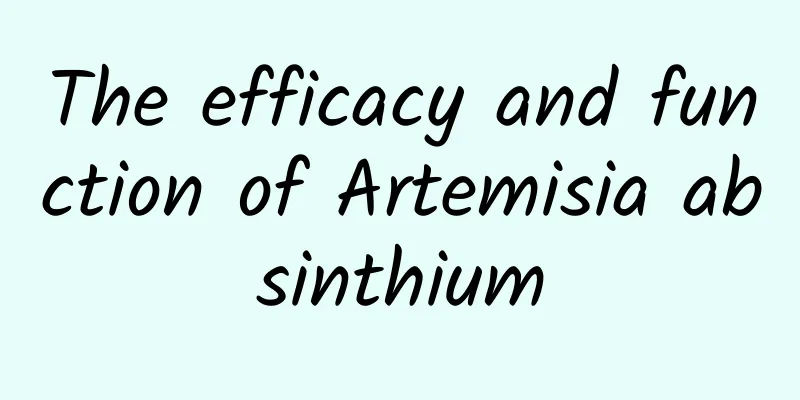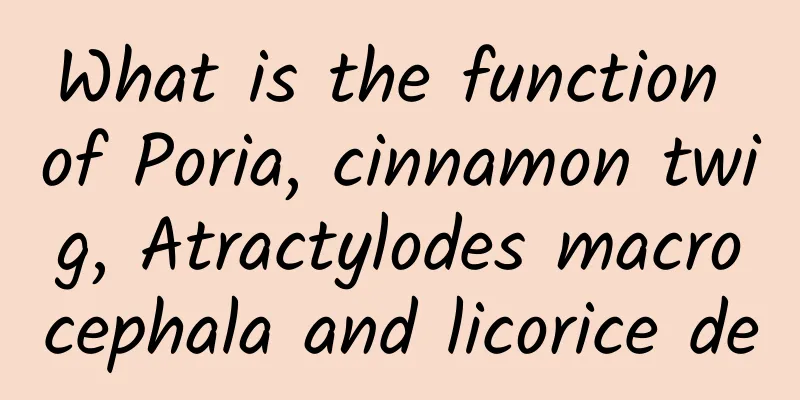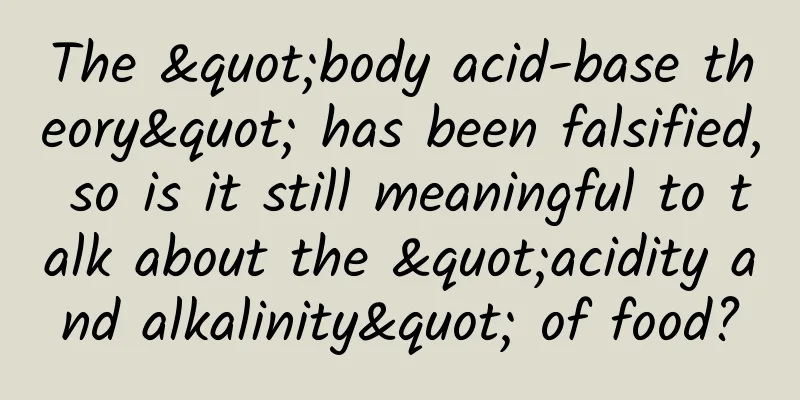Evodia rutaecarpa's efficacy and effects

|
Treating diseases also requires good medicines, which will help improve the disease. There are many common types of medicines in life, especially some Chinese herbal medicines, which have many classifications. Therefore, when choosing such medicines, you also need to pay attention to which diseases it can treat so that it will not harm your health when used. What are the effects and functions of Evodia rutaecarpa? Many people don’t know much about the effects and functions of Evodia rutaecarpa. Before choosing it, you need to know something about it. Therefore, experts also have some explanations on this. Let’s introduce it in detail below. Evodia rutaecarpa's functions and effects: effect: 1. Heat dissipation and pain relief 2. Reduce nausea and stop vomiting 3. Used to treat headache or epigastric pain caused by liver and stomach deficiency and cold, and yin turbidity. effect The main effect on the central nervous system is analgesia. Its analgesic components are evodia rutaecarpine, evodia rutaecarpine, isoevodia rutaecarpine and evodia lactone. Intravenous injection of 10% ethanol extract of Evodia rutaecarpine can increase the body temperature of rabbits and increase the threshold of contracture of the oral muscles caused by electrical stimulation of the rabbit dental pulp. Its effect intensity is equivalent to aminopyrine. 5g/kg and 20g/kg of Evodia rutaecarpine decoction can significantly delay the pain reaction time, which can last for 2.5 hours. Oral administration of Evodia rutaecarpine has an antiemetic effect, and the antiemetic effect can be enhanced when taken with ginger. However, there are also reports that the decoction of Evodia rutaecarpine and acetone extract given to dogs by gavage respectively have no antiemetic effect on vomiting caused by 4% copper sulfate in dogs. Effects on the cardiovascular system: 0.03-0.24g/kg of Evodia rutaecarpa alcohol-water extract injected intravenously into anesthetized cats produced a dependent pressor effect and increased the contraction force of the diaphragm, but tetraethylamine could not antagonize it. Intraperitoneal injection into awake rats also caused pressor effect. Both bilateral nephrectomy, phentolamine or propranolol significantly reduced its pressor effect. Experiments have shown that the decoction, granules and distillate of Evodia rutaecarpa have significant hypotensive effects when injected intravenously and intragastrically, and are dose-dependent. The hypotensive effect lasts for a long time, generally for more than 3 hours, and does not significantly affect the heart rate during hypotensive treatment. However, intramuscular injection has a very weak hypotensive effect, and also has a hypotensive effect on experimental renal hypertension dogs and normal rabbits. Licorice decoction can make the hypotensive effect of Evodia rutaecarpa ineffective. Evodia rutaecarpa has no blocking effect on ganglia, but can counteract the pressor response caused by adrenaline, norepinephrine and vasopressin. Some reports believe that the effect of Evodia rutaecarpa alcohol water extract on the cardiovascular system is produced by exciting α-receptors and β-receptors. Data show that the antihypertensive effect of Evodia rutaecarpa is produced through multiple active ingredients and multiple mechanisms. The antihypertensive effect of Evodia rutaecarpa is related to the dilation of peripheral blood vessels; because diphenhydramine can cancel its antihypertensive effect, it may also be related to histamine. But it has nothing to do with choleretic nerves and their receptors. Dehydroevodiaecarpa is one of the antihypertensive components. It has the effect of dilating blood vessels. While lowering blood pressure, it slows down the heart rate and has a stronger effect on lowering diastolic blood pressure than systolic blood pressure. Since indomethacin can partially and polyphosphate can completely cancel its antihypertensive effect, it suggests that the antihypertensive effect is related to prostaglandin synthesis. Demethylevodiaecarpa is also a antihypertensive component. Its antihypertensive effect increases heart rate and reduces peripheral vascular resistance at the same time. This effect can be blocked by propranolol, indicating that its antihypertensive effect is related to the excitation of β-receptors. As for the effect on the digestive system, studies have shown that the bitter substance contained in Evodia rutaecarpa is a bitter substance with a bitter stomachic effect, and the volatile oil contained in it has an aromatic stomachic effect. The methanol extract of Evodia rutaecarpa has an effect on resisting water-immersion stress ulcers in rats; the decoction also has an effect on resisting hydrochloric acid gastric ulcers and indomethacin plus ethanol gastric ulcers, and has a tendency to inhibit the formation of water-immersion stress ulcers and pyloric ligation ulcers. Evodia rutaecarpa has a bidirectional effect on the activity of isolated small intestine, which is exciting at low concentrations and inhibiting spontaneous contraction at high concentrations. It can antagonize the excitatory effects of nicotinic acid, physostigmine, acetylcholine, histamine, barium chloride, phentolamine, and reserpine on the isolated small intestine; it can also counteract the inhibitory effects of hexamethonium, atropine, and adrenaline on the isolated small intestine, but it cannot antagonize the inhibitory effects of diphenhydramine, papaverine, verapamil, and mesadone on the isolated rabbit small intestine. This shows that the excitatory effect of Evodia rutaecarpa on the intestine is not related to acetylcholine nerves and M-choline receptors, and its inhibitory effect may not be closely related to adrenergic nerves and α-receptors, but may be related to direct excitation of β-receptors. Oral administration of Evodia rutaecarpa decoction to mice (20g/kg) can significantly reduce the frequency of large intestinal irritation diarrhea caused by senna leaves; it also tends to reduce the frequency of small intestinal irritation diarrhea caused by castor oil. Evodia rutaecarpa slows down the gastrointestinal propulsion of normal mice and can also antagonize the inhibition of gastrointestinal propulsion of mice by morphine or atropine, suggesting that the bidirectional effect of Evodia rutaecarpa on the intestine is beneficial to regulating the intestinal function of the body. It is also effective for diarrhea caused by gastrointestinal dysfunction and dyspepsia diarrhea. Evodia rutaecarpa can excite the intestine, and the cGMP it contains may be involved in intestinal activity. The effect of Evodia rutaecarpa on intestinal activity may be achieved through choline-like, histamine-like, anti-adrenergic-like effects, or through two or one of them. Regarding the effect on uterine smooth muscle, the sympathomimetic component of Evodia rutaecarpa, parahydroxyephrine, has the effect of relaxing the isolated uterus. The residual liquid after removing the sympathomimetic component can excite the rat uterus and counteract the relaxing effect of parahydroxyephrine. The components that excite the uterus are dehydroevodia rutaecarpine, evodia rutaecarpine and rutin. Dehydroevodia rutaecarpine may be a 5-hydroxytryptamine receptor agonist, and its uterine excitation effect can be blocked by dimethylergonovine but not by atropine. Other effects: the decoction of Evodia rutaecarpa has a strong inhibitory effect on Vibrio cholerae; it has different degrees of inhibitory effect on skin fungi such as Trichophyton violaceum, Trichophyton concentricum, Trichophyton sylvatica, Microsporum audouinum, Microsporum ferrugineum, Microsporum woolly, Microsporum gypseum, Epidermophyton inguinale, and Nocardia asteroides. The water extract and 50% methanol extract of Evodia rutaecarpa have anti-caries effects. Evodiamine has an antiviral effect on mice infected with the Columbia SK strain of virus. In vitro experiments show that the decoction of Evodia rutaecarpa and its alcohol and ether extracts can kill Ascaris suum, earthworms and leeches in vitro. Through the above introduction, we have a good understanding of the effects and functions of Evodia rutaecarpa. Therefore, when choosing it, it will be of great help in treating diseases. However, it should be noted that when using such medicine to treat diseases, it is also necessary to master the usage methods, so that it will be of great help in treating diseases. |
<<: Black snake bergamot capsule
>>: The effects and functions of centipedes
Recommend
What are the effects of Eucommia wine?
Eucommia ulmoides is a kind of traditional Chines...
What does it mean to see 100 million butterflies flying together? You will know when you go to Jinping County
Butterfly is one of the insects that everyone is ...
The shell can cure heart disease, the kernel can relieve constipation, and the root can produce body fluid. You have definitely never seen it before.
This melon likes to grow in the cracks of cliffs ...
The efficacy and function of Kunming Millettia reticulata
Traditional Chinese medicine often has unexpected...
What is Coriolus versicolor?
When it comes to Cordyceps sinensis, most people ...
Can this food prevent cancer? Not only can it not, it will also make you smell bad
Recently, the topic of "eating raw garlic&qu...
What are the effects of frying Cassia seeds?
I believe that some friends will be very familiar...
What are the effects and functions of neem bark
Melia bark is actually the bark of neem tree bran...
What are the medicinal values of safflower?
Safflower is a very common plant and a traditiona...
Why do most people not remember anything before the age of 3?
Friends Try to recall Do you remember what happen...
If you want to minimize your intake of nitrite, how should you eat vegetables?
You may have heard that nitrite can be used to pr...
What are the weight loss effects of Poria cocos
Many people in modern society suffer from obesity...
The efficacy and function of traditional Chinese medicine Chuanduan
Chuanduan is a relatively common Chinese medicina...
With a corset, I will have a “slim waist”?
The fairies are very open about their love for be...
What are the effects and functions of white peony and how to eat it?
White peony root is a relatively common medicine,...









